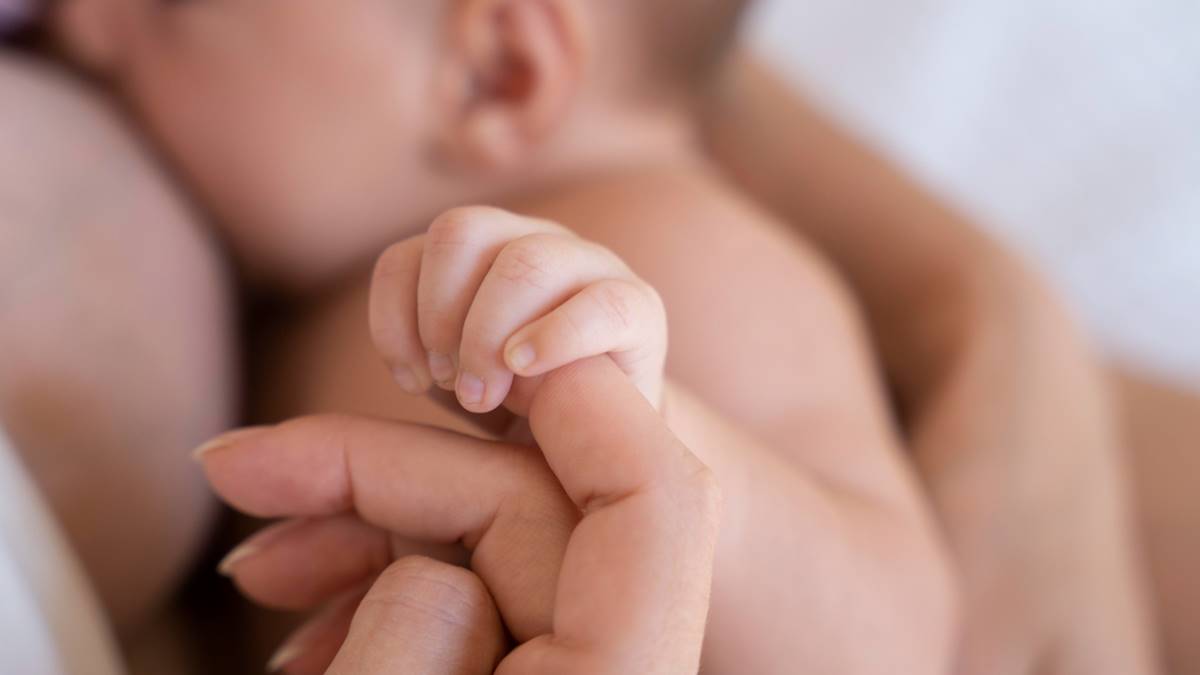One day your baby’s hands are just curled-up little fists, and seemingly the next—they’re reaching out, exploring the world, and pulling your hair with surprising precision. It’s one of the most exciting milestones in early development. But you might still be wondering: When do babies start grabbing things? And is there such a thing as “too early” or “too late”?
Let’s walk through what to expect, how the process unfolds, and how you can support your little one as they take their first literal grasp on life.
From Reflex to Intention: The Stages of Grabbing
Grabbing doesn’t happen overnight. It’s a gradual shift from reflexive movement to purposeful coordination, and it reflects how your baby’s brain and body are learning to work together.
Here’s a timeline to guide you:
0–2 Months: Reflexive Grasping
In the very early days, babies have what’s called the palmar grasp reflex. Place a finger in your baby’s palm, and they’ll instinctively close their hand around it. It’s sweet—but not voluntary. This reflex fades by around 2 months.
2–3 Months: Hands to Mouth and Midline
At this stage, babies begin discovering their own hands. You may notice them staring at their fingers, bringing their hands to their mouth, or clasping them together. This is the beginning of intentional hand movement, but actual grabbing is still a few weeks away.
3–4 Months: First Attempts at Reaching and Touching
Around this time, babies start trying to reach out toward nearby objects. They may swat at toys or your face, and their hand movements become more fluid. They’re learning depth, distance, and control—even if their aim isn’t quite there yet.
4–5 Months: Voluntary Grabbing Begins
This is when grabbing really starts. Your baby may now intentionally reach for and grasp lightweight toys or fingers. The grip is still clumsy, and they often drop things quickly—but the connection between eye, brain, and hand is forming.
6–7 Months: Coordinated Grasping and Transferring Objects
By this stage, most babies can not only grab but also pass items from one hand to the other. Their grasp becomes more refined—shifting from a whole-hand “rake” to using fingers more precisely. You’ll notice them exploring objects by shaking, banging, or putting them in their mouth.
8+ Months: Pincer Grasp and Purposeful Exploration
As they approach their first birthday, babies begin to use a pincer grasp—thumb and forefinger working together—to pick up small objects like cereal or beads. This fine motor milestone also marks a leap in curiosity and independence.
What If Your Baby Isn’t Grabbing Yet?
Babies develop at their own pace. Some may grab as early as 3 months, while others may take a bit longer. Occasional delays aren’t necessarily a cause for concern—but it’s always worth observing the bigger picture.
Talk to your pediatrician if:
-
Your baby doesn’t try to reach for toys by 5–6 months
-
One hand seems noticeably weaker or less active than the other
-
Your baby shows little interest in their surroundings
-
Other developmental milestones are also delayed (like head control or rolling)
Early intervention can be incredibly effective if support is needed, so trust your instincts and ask questions.
How You Can Support This Milestone at Home
You don’t need fancy tools to encourage grabbing—your baby just needs opportunities, safe space, and time.
Try these simple ideas:
-
Offer toys that are easy to grasp, like soft rattles, rings, or lightweight stuffed animals
-
Use high-contrast toys to help them focus and reach
-
Provide tummy time daily—it strengthens muscles needed for reaching and grabbing
-
Talk and interact during play—your attention motivates movement
-
Let them explore their hands without mittens or swaddles when awake
And perhaps most importantly: celebrate the small victories. That first time they grab your shirt, a rattle, or even their own foot? It’s a big deal—for both of you.
Grabbing Is the Beginning of Everything
When your baby starts grabbing things, they’re doing much more than just clutching a toy. They’re learning cause and effect, practicing control, and starting to shape how they engage with the world.
That tiny hand reaching out? It’s reaching for connection, discovery, and confidence. And it’s just the start of many things they’ll hold on to—with your help—along the way.
